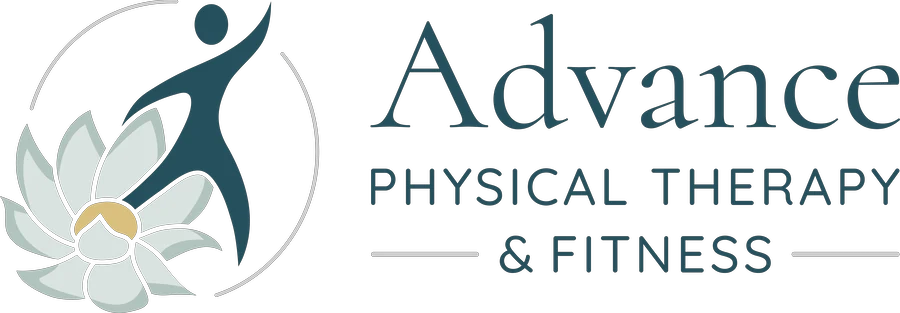Surviving the Gym with Sensory Awareness
Getting to the gym to exercise with the intention of improving fitness and wellness is a great challenge and therefore a great achievement when accomplished. It is, however, beyond disheartening to see people in their chosen exercise routines working really hard at hurting themselves, either with their “trainers” or on their own. Most of us […]
How About My Aching Sacroiliac Joint?
Our bodies are amazingly capable of compensating, allowing us to continue to move and function in our busy lives. Unfortunately, compensation often comes with a cost. The Sacroiliac joint (SI joint) is a common source of compensation and pain when movement elsewhere in the body becomes problematic. The most common issue I see in the […]
Treating Scoliosis Conservatively: Getting the Message Out
Last month, our own Lisa Mangino PT, DPT, PCS, C/NDT, PRC was invited to Fayettville NC to present on “Current Concepts in 3 Dimensional Conservative Management of Scoliosis”. The objectives of the presentation were to help therapists gain an understanding of body imbalances related to scoliosis, to learn about scoliosis measurement tools and x-rays, and […]
What are Curvatures of the Spine?
The human spine is made up of 33 stacked vertebrae. These segments allow small movements in all directions which facilitates balance in the upright position. A normal human spine is not straight. There are small curves at the neck, upper back and low back. If these curves become exaggerated, posture, mobility and stability of the […]
Physical Therapy Treatment for Shortness of Breath
One of the benefits of improving core strength through the Postural Restoration approach, is that is requires us to establish efficient breathing patterns (http://www.posturalrestoration.com/the-science/treatment). In doing so, many of my patients that come in with back or neck pain subsequently report that their breathing has improved along with their pain reduction. I have recently seen […]
Wow! Science Helps Understand “Your Brain in Pain”
This is what a pain pathway, known as a “neurotag” might look like in your brain: Yup! Complicated. That’s a lot to take in isn’t it? The main idea though is that each person will experience pain in a unique way and in different parts of the brain, based on their experiences, perception, fear and […]
A Physical Therapist Describes Treatment at Advance Physical Therapy
Tell us about your experience at Advance Physical Therapy (APT) and how your function has improved since beginning physical therapy. My reason for coming to APT was to address a mild scoliosis. While not debilitating or the source of intractable pain, it has contributed to severe muscle tension throughout my shoulders and neck, and it […]
67 year old female with a 52 degree lumbar curve due to scoliosis….
The following is a recent testimonial from a patient who traveled from Wilmington to Advance Physical Therapy in Chapel Hill for treatment of scoliosis and kyphosis: I have a smaller thoracic curve and kyphosis as well. I have tried different physical therapists, acupuncture, massage and exercise but nothing worked for the pain I was experiencing […]
Postural Restoration for Children
At the last Capitol District Physical Therapy Association meeting, my colleague, Lisa Mangino, PT, DPT, PCS, C/NDT, PRC, offered a terrific presentation on how she uses principles of Postural Restoration with children. Lisa reminded participants that the human body is inherently asymmetrical and is biased toward patterns of extension. Sensory awareness of posture, the ground, […]
Tips to Change Habits for Tension Relief
Focal vision refers to being focused on something small at any distance, from your phone to a golf ball far away on the green. Technology is partly contributing to our society becoming more focally near-sighted. The more you focus on a bright device 6-12 inches from your nose, the stronger those brain pathways become. Other contributors include being too busy, always striving to be faster, better, to do more, and not taking time to rest… your muscles AND your eyes.
What Are Your Teeth Trying to Tell You?
Are you listening? Did you know that of all your body parts, your teeth are of the most sensitive? They will tell you if there is a raspberry seed caught in them. They will tell you if the drink you are drinking is too hot or too cold. They will tell you if you need […]
Poor Posture, Poor Core Control, Difficulty Breathing
Too much “Doing” and not enough “Being”: a recipe for pain and poor performance. There are fundamental principles for healthy core body alignment and breathing. When these essential elements are missing, postural compensations, strain and less efficient movement strategies become habits that often lead to pain and or inefficiency of movement. What are the essentials? […]
Pilates: Postural Restoration Style
Scoliosis and Helping Aging Spines Lengthen
Because our scoliosis approach is quite unique, we often have clients come in from out of town and stay for several days of intensive therapy. On a recent “intensive” situation like this, a patient wrote the following description of her experiences and initial outcome: “I’ve tried so many therapies and treatments for my scoliosis and […]
Tips to Change Habits for Tension Relief
Don’t Be Controlled By Your Focal Vision “Powered Peripheral Vision”, Tips to Change Habits for Tension Relief Adapted from Dr. Heidi Wise, PRI Vision, LLC Focal vision refers to being focused on something small at any distance, from your phone to a golf ball far away on the green. Technology is partly contributing to our […]
The efficacy of three-dimensional Schroth exercises in adolescent idiopathic scoliosis: A randomised controlled clinical trial
It is always affirming to see support in the literature for the changes we see case by case at Advance Physical Therapy every day. Recently, a randomized controlled trial was conducted to evaluate the effectiveness of professionally administered, 3 dimensional Schroth exercise program for the treatment of scoliosis. I think there are two key points […]
Too much “Doing” and not enough “Being”: a recipe for pain and poor performance.
There are fundamental principles for healthy core body alignment and breathing. When these essential elements are missing, postural compensations, strain and less efficient movement strategies become habits that often lead to pain and or inefficiency of movement. What are the essentials? (How to get better at “Being” in the core) The pelvic ring should be […]
Release Your Neck!
Easier said than done, right? So why do necks stay so tight all the time? When we work with patients who have chronic neck pain and shoulder tension, we usually find dysfunctional breathing patterns directly related to poor core body postures. Did you know the best muscle for getting air into your body is the […]
Pediatric Physical Therapist, Lisa Mangino, PT, DPT, PCS, C/NDT, PRC Featured at National Forum
Our very own pediatric physical therapist, Lisa Mangino, PT, DPT, PCS, C/NDT, PRC presented her unique approach to treating children at the annual Postural Restoration Institute® (PRI) meeting of PRI certified physical therapists and athletic trainers on April 18th 2015. She discussed how children tend to alter their posture and movement patterns with unbalanced muscle […]
Vicious to Virtuous Cycle in Adolescent Idiopathic Scoliosis – Part 2
* Muscle Imbalance * Gravity * Breathing * Body Schema * Walking The Vicious Cycle describes how these factors, listed above begin to reinforce curvatures that have developed, often in hypermobile, restless, young people. (see part 1) However, it has been postulated that these same factors could be utilized to re-balance curvatures if applied in […]
Scoliosis: From Vicious to Virtuous Cycle- Part I
As mentioned in my previous blog, the vicious cycle concept has been researched and developed by Dr. Ian Stokes. Simply stated, it describes how environmental and physiological factors contribute to the progression of a curvature once that curve has passed a certain limit. About 25 degrees is the generally acknowledged tipping point. What are these […]
Keep Your Eyes On Those Growing Spines!
Early detection and treatment of abnormal spinal curves during growth can make a tremendous difference in the health of the mature spine. Keep an eye on your growing child’s spine, especially between the ages of 9 and 14 with this simple test: Adams Forward Bending Test: Have your child stand with their feet together and […]
The Tremendous Advantage of Early Detection and Treatment of Adolescent Idiopathic Scoliosis
While spinal curvature can develop at any time in a person’s life, there is a tremendous window of opportunity to rehabilitate these changes when it is noticed at a young age, before bony maturity is reached. In fact, idiopathic curvatures most frequently develop during growth spurts, before or during puberty. The etiology or the reason […]
Postural Restoration lends the support our bodies need
Support comes in many forms. I recently completed my certification in Postural Restoration (PRC). I could not have achieved this designation without the support of my co-workers at Advance Physical Therapy, the clients I care for, my family or the faculty at the Postural Restoration Institute. Postural Restoration is an exciting and effective approach to […]



